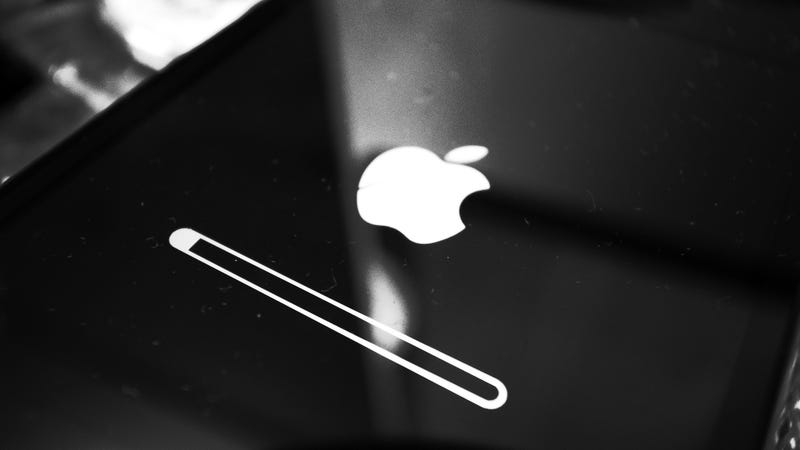
The most frustrating thing about a phone addiction is that unlike actual substance abuse, the solution is not to quit cold turkey. Instead, we have to find ways to use this technology responsibly, fighting apps overtly designed to steal our time.
Marketer Josh Spector wrote about ten habits that help him control his phone use. Acquiring these habits is hard, so we’re adding some tricks and apps that will enforce your self-control.
1. Stop checking your phone in the car.
Stick your phone in the glove compartment.
Android and Windows Mobile come with a driving mode that switches you to voice controls. iOS 11, coming out September 12, will include an automatic “Do Not Disturb While Driving” mode. (AT&T customers can already use the AT&T DriveMode app).
If Google Assistant isn’t enough, download Drivemode for Android for a “no-look” interface that automatically launches when you start driving.
2-3. Move your phone elsewhere when you watch TV or read.
When you’re out and about, it makes sense to keep your phone in your pocket. But when you get home, take it out. Leave it to charge, and try treating it like a home phone. The less often you check your phone for “just one thing,” the less often you get sucked into an hour of Twitter.
When you get up and check your phone, try leaving it plugged in, and/or standing right over the outlet. That’ll make it harder to accidentally pocket it and break the habit.
4. Turn off notifications.
Specifically, turn off all notifications that don’t require immediate action. You can probably leave calls and texts on, but turn off everything from Twitter, Facebook, and every app with a “follow” function.
Turn off your email notifications too. It’s not as if you don’t check your email every 20 minutes anyway. If you need, establish a “call/text if it’s an emergency” policy.
When you download a new app, disable notifications (or just never enable them). Let the app earn your attention.
If some notifications kind of matter, make them silent and hide them from your lock screen. They still might suck you in once you open your phone, but at least they won’t trigger a new browsing session.
5. Choose an end point for your browsing session.
Put your clock app on your home screen. When you open your phone, before anything else, set a timer for how long you want to spend on your phone.
Android offers some more automatic solutions. Use QualityTime to limit the time you spend on specific apps.
Try turning your phone off—like, really off—when you’re done using it. For most of us, this will prove a little too drastic. But try it just for a day and see what you gain. Everyone’s phone needs are different, so it’s normal to try a few tricks that don’t work out. That’s not failure, it’s just experimentation.
6. Stop checking your phone when in line.
For most of us, this is exactly what mobile phones are for. But if you really want to lean into the boredom that’s essential for creativity and reflection, then stop checking your phone just because you’re not doing anything for a minute.
Practically, this might mean keeping your phone in a different pocket, so you can’t pull it out quite so unconsciously. Get a wallpaper that reminds you to put down your phone. Add a fresh one weekly. Practice stopping and looking around you.
7. Don’t use your phone in bed.
Establish a no-phone time in the morning and evening. To enforce it—or to only block the less essential functions—use Freedom (iOS) or Offtime (iOS/Android) to turn off all access to domains like Twitter, Facebook, and Instagram. That way you can pick up your phone to check for actually important updates, while shielding yourself from drifting on over to your social feeds.
This may sound too stringent if your job occasionally involves social media. But even as a blogger, I’ve kept Freedom on, blocking Twitter between 9:30 PM and 7:30 AM. If I ever actually need to tweet at night, I could always go to my computer. At least five times a week I check my phone in bed, realize Twitter is blocked, and go back to my book.
8-9. Break the “checking” cycle.
Once you’ve checked your email, Twitter, Facebook, Instagram, Snapchat, and so on, it’s tempting to start the loop all over again. Instead check just one app at a time. Train yourself to put your phone down after your intended action.
It’s pretty hard to break the “what’s next” habit, so do anything you can to make switching apps less automatic. Close apps as soon as you use them, so you’d have to boot them up again. And hide all your distracting apps off of the home screen, putting them in folders so you have to dig for them or type their names to open.
Try deleting one social app at a time, for just a day or a week, to see whether you really need it. If you end up keeping one distracting app off your phone, it’ll be worth it.
10. Don’t expect a quick fix.
It’s difficult to find the right balance. Most of us really appreciate the advantages of a smart phone, and most of us also use it more than we want to. Most of these tricks only work as long as you’re paying attention to them, and apps keep finding new ways to invade your space, so you need to keep finding fresh ways to trick your brain out of bad behavior.

Post a Comment